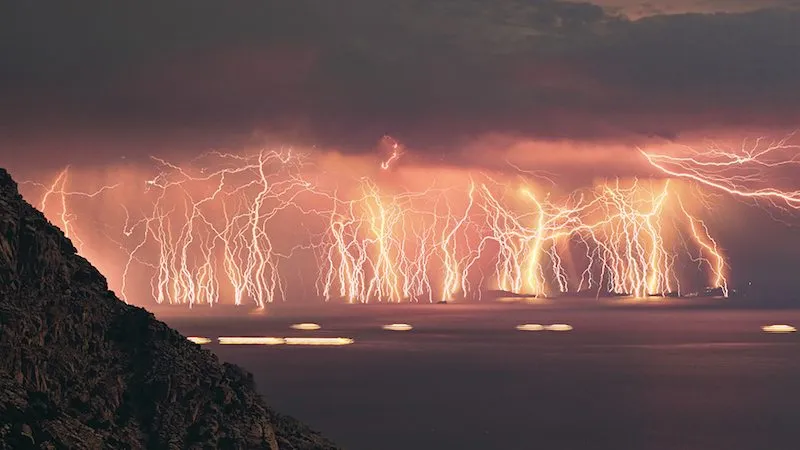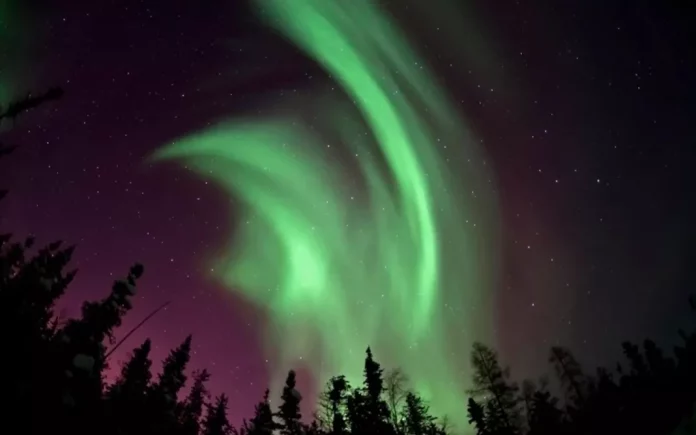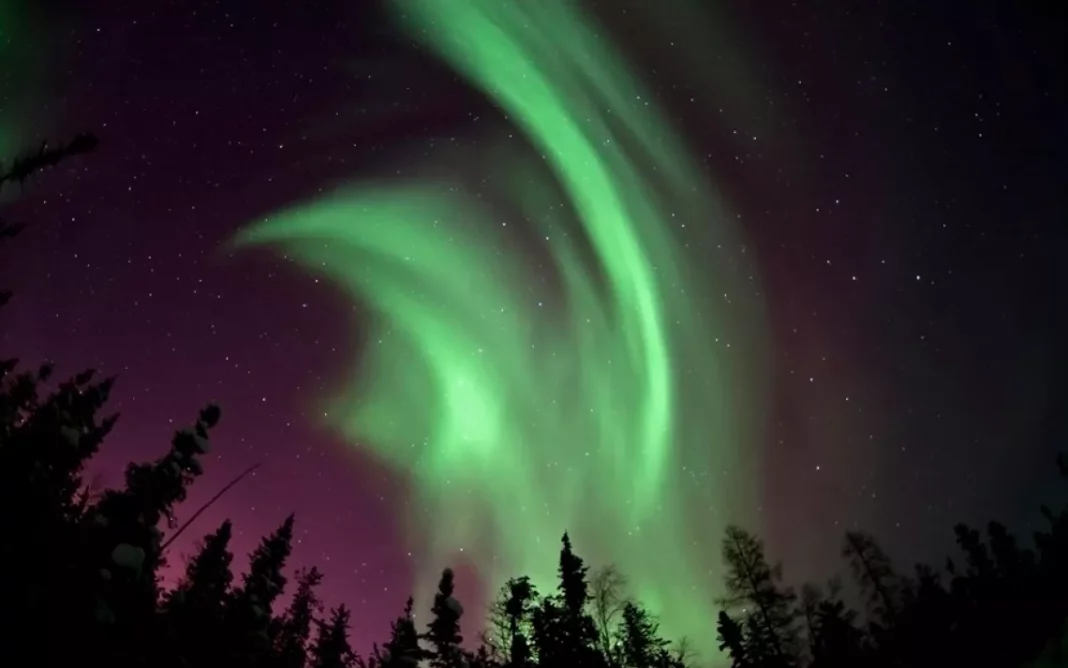Have you ever imagined a place struck by lightning almost constantly, night after night? This isn’t science fiction; it’s a real phenomenon in Venezuela called Catatumbo lightning.
Catatumbo lightning strikes a staggering 280 times per hour, on average, making it the world’s champion of electrical activity! This mesmerizing spectacle bathes the sky in an ethereal glow for up to nine hours a night, on roughly 140 nights annually.
But unlike a typical thunderstorm, Catatumbo lightning is silent – no booming thunder accompanies the celestial light show. What causes this extraordinary phenomenon and its eerie silence? Join us on a journey to unveil the secrets of Catatumbo lightning, from ancient myths to the latest scientific discoveries. We’ll explore the unique geography and climate that fuel this perpetual storm, delve into the mind-boggling characteristics of the lightning strikes, and grapple with the unsolved mysteries that continue to challenge scientists.
A Land of Perpetual Flashes: Unveiling the Legend of Catatumbo Lightning
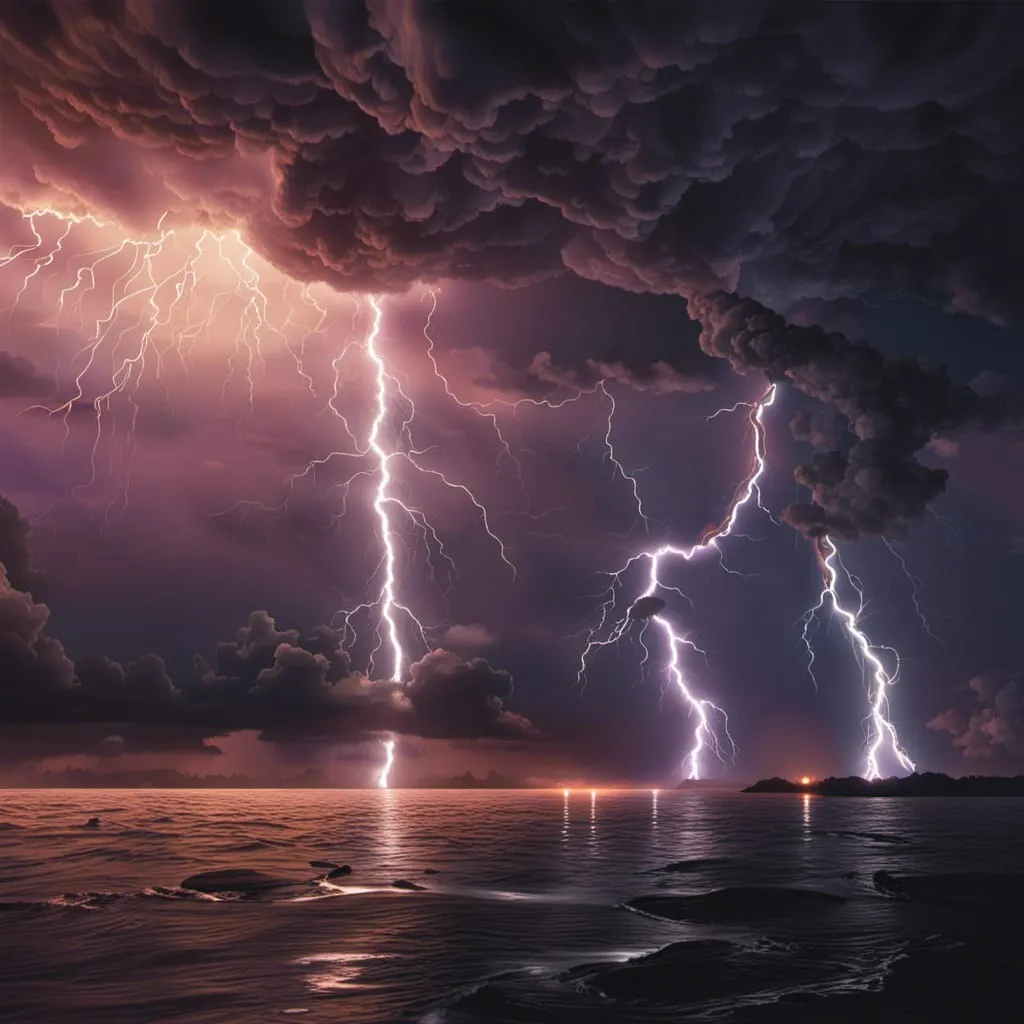
Imagine a place where lightning strikes the sky with an almost supernatural frequency, illuminating the night for up to nine hours every night. This isn’t a scene from a fantasy novel; it’s a very real phenomenon in Venezuela called Catatumbo Lightning.
Located where the Catatumbo River meets Lake Maracaibo, Catatumbo lightning is a mesmerizing spectacle that has captivated humanity for centuries. The indigenous Añu people believed it to be the work of their gods, forging celestial arrows in the everlasting storm. What is Catatumbo lightning, exactly? Modern science offers a more grounded explanation, but the phenomenon remains a source of wonder and scientific inquiry.
Catatumbo lightning strikes an astounding 280 times per night, on average, making it the world leader in lightning activity. This translates to a staggering 1.4 million lightning strikes per year! The Catatumbo lightning storm is so frequent and powerful that it’s said to be visible from as far away as 400 kilometers (248 miles). The booming thunder that typically accompanies a lightning strike is absent here, adding another layer of mystery to this already enigmatic phenomenon.
From Indigenous Myths to Scientific Inquiry: A Long History of Catatumbo’s Enigma
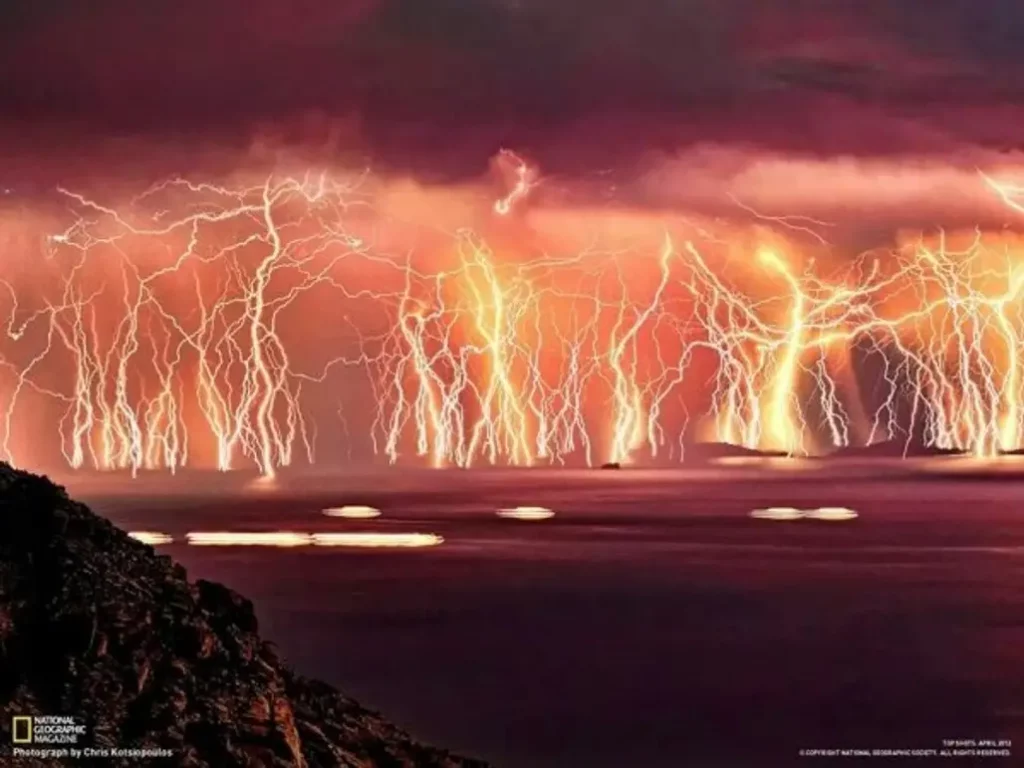
For millennia, the Catatumbo lightning has cast its otherworldly glow over the Venezuelan landscape. The indigenous Añu people, who have inhabited the region for centuries, developed a rich mythology surrounding this awe-inspiring phenomenon. They believed the relentless flashes were the handiwork of their deities, crafting arrows of light in the celestial forge.
As European explorers arrived in South America, the legend of Catatumbo lightning began to be documented. Early accounts marveled at the sheer frequency and intensity of the what is Catatumbo lightning displays. Spanish explorer Amerigo Vespucci is credited with one of the first written descriptions of the phenomenon in the 16th century.
Over time, scientific inquiry began to chip away at the mystical explanations. By the 19th century, scientists were proposing theories based on the region’s unique geography and climate. The convergence of warm, moist air from the Caribbean Sea with the cool air masses descending from the Andes Mountains was believed to create the ideal conditions for the constant generation of electrical charge, leading to the frequent Catatumbo lightning strikes.
However, the lack of accompanying thunder remained a puzzle. Some theories suggested the unique atmospheric conditions could be dampening the sound waves, while others proposed that the lightning strikes themselves might be brief and localized, not generating the powerful thunderclaps associated with typical storms.
The 20th and 21st centuries saw advancements in meteorological technology, allowing scientists to study Catatumbo lightning in greater detail. Researchers have proposed additional factors, such as the presence of methane gas rising from the lakebed, which could further contribute to the electrical activity. Despite these advancements, the exact mechanisms behind the phenomenon and the absence of thunder are still being debated, making Catatumbo lightning an ongoing scientific inquiry that continues to spark the imagination.
A Perpetual Storm: Unveiling the Unique Geography and Climate Behind Catatumbo Lightning
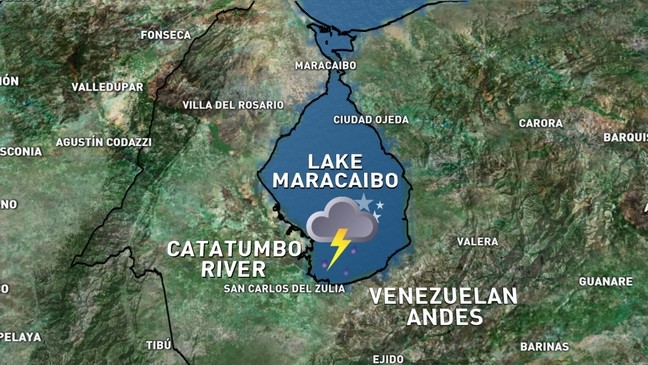
The mesmerizing spectacle of Catatumbo lightning isn’t a random act of nature. It’s a consequence of a unique confluence of geographical and climatic factors that transform a specific region of Venezuela into a near-perpetual storm. Imagine a giant cauldron where the warm, moist winds from the Caribbean Sea collide with the cool, dry air masses rolling down the slopes of the majestic Andes Mountains. This very real scenario plays out near the mouth of the Catatumbo River, where it empties into Lake Maracaibo, creating the perfect breeding ground for what is known as Catatumbo lightning.
According to a 2016 research article published in the Journal of Geophysical Research: Atmospheres [1], the specific geographic layout of the region plays a crucial role. The Andes Mountains act as a giant barrier, forcing the warm, moisture-laden air to rise rapidly. As this air ascends, it cools and condenses, forming towering clouds ripe for electrical activity. The constant flow of warm, moist air from the Caribbean ensures a continuous supply of fuel for this atmospheric engine, leading to the near-perpetual nature of Catatumbo lightning.
Another key ingredient is the presence of Lake Maracaibo itself. The lake’s vast surface area acts as a giant heat sink, absorbing solar radiation and releasing warm, humid air throughout the day. This warm air from the lake further interacts with the cool mountain breezes, intensifying the updraft and promoting even greater electrical charge buildup within the clouds.
The aforementioned study also suggests the possibility of methane gas emissions from the lakebed contributing to the phenomenon. Methane, a flammable gas, could potentially act as an additional source of fuel for the electrical discharges that create Catatumbo lightning.
However, the exact role of methane and its interaction with other climatic factors requires further investigation. While science has successfully demystified the broad strokes behind Catatumbo lightning, the intricate details of this atmospheric phenomenon continue to be a topic of ongoing research.
A Natural Spectacle: Exploring the Characteristics and Frequency of Catatumbo Lightning
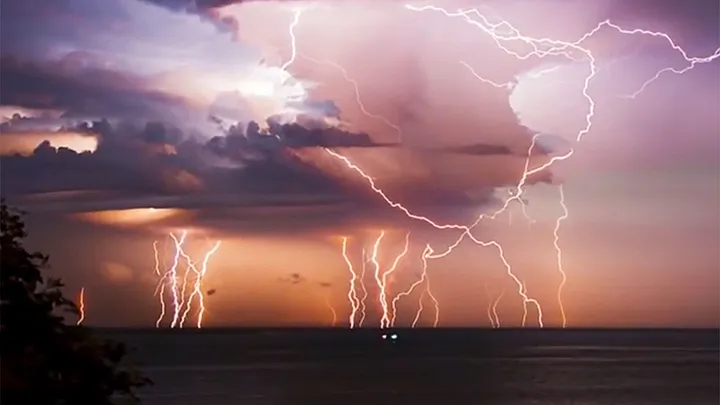
Unlike the occasional flashes that illuminate our skies during a typical thunderstorm, Catatumbo lightning puts on a nightly light show of almost unimaginable proportions. Imagine a sky ablaze with an average of 280 lightning strikes per hour – that’s right, per hour! This translates to a staggering 1.4 million lightning strikes every year, making Catatumbo lightning the undisputed champion of electrical activity on Earth.
The sheer frequency of Catatumbo lightning isn’t the only mind-boggling aspect. The phenomenon also boasts an impressive duration. The storm rages for up to nine hours each night, on roughly 140 to 160 nights annually. This means that for a significant portion of the year, the skies above Lake Maracaibo come alive with a mesmerizing electrical display.
Visually, Catatumbo lightning is a sight to behold. The flashes come in various shapes and sizes, often illuminating the clouds with an ethereal glow. Unlike a typical lightning strike that cracks sharply across the sky, Catatumbo lightning tends to flicker and branch out within the cloud formations, creating a mesmerizing dance of light.
One particularly intriguing characteristic of Catatumbo lightning is the absence of thunder. Thunderstorms are typically a symphony of light and sound, but in this case, the booming claps are noticeably absent. Scientists believe this could be due to several factors. The unique atmospheric conditions might be dampening the sound waves, or the lightning strikes themselves might be brief and localized, not generating the powerful thunderclaps associated with regular storms.
The lack of thunder adds another layer of mystery to this already enigmatic phenomenon. While the science behind the geographical and climatic triggers is well understood, the exact mechanisms behind the lightning’s characteristics and the absence of thunder remain a topic of ongoing research. Despite the unanswered questions, Catatumbo lightning continues to captivate scientists and travelers alike, a testament to the awe-inspiring power of nature.
Beyond the Spectacle: The Unsolved Mysteries of Catatumbo Lightning
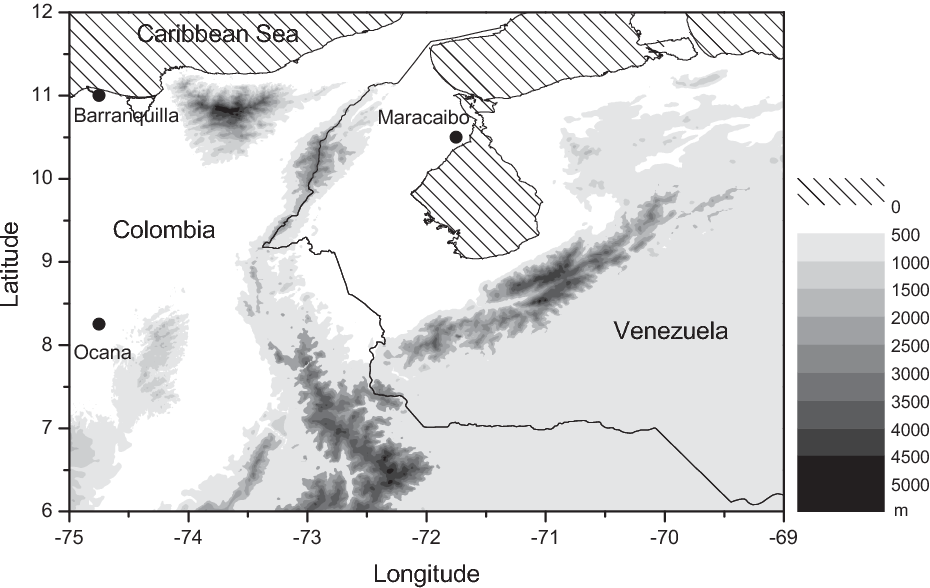
The mesmerizing light show of Catatumbo lightning may be a feast for the eyes, but beneath the spectacle lie several unsolved mysteries that continue to challenge scientists. The sheer frequency and intensity of the lightning strikes in this specific location are unlike anything else witnessed on Earth. While science has shed light on the broad climatic and geographical factors that contribute to Catatumbo lightning, some key questions remain unanswered.
One of the biggest enigmas is the reason behind the lightning’s extraordinary frequency. Normal thunderstorms are triggered by the collision of warm and cool air masses, leading to the buildup and discharge of electrical energy. However, the near-perpetual nature of Catatumbo lightning suggests a more complex mechanism at play.
Some scientists theorize that the constant flow of warm, moist air from the Caribbean, combined with the unique updraft patterns created by the Andes Mountains, provides a continuous source of fuel for electrical charge generation within the clouds. However, others propose that the presence of methane gas emissions from the lakebed might be a contributing factor, acting as an additional source of fuel for the lightning strikes.
Another unsolved mystery is the absence of thunder that typically accompanies lightning. The thunderous boom we associate with a lightning strike is caused by the rapid expansion of air along the path of the electrical discharge. In the case of Catatumbo lightning, some scientists believe the unique atmospheric conditions, specifically the high humidity levels, might be dampening the sound waves, preventing the thunder from reaching our ears.
An alternative theory suggests that the lightning strikes themselves might be brief and localized events happening within the cloud formations, not packing the same punch as a typical lightning bolt that travels from cloud to ground. This could explain the lack of thunder, as these smaller discharges might not generate the powerful sound waves needed to produce a booming clap.
The debate around these mysteries continues, with ongoing research aimed at unraveling the secrets behind Catatumbo lightning. New technologies and advancements in atmospheric science may one day provide definitive answers. In the meantime, this enigmatic phenomenon serves as a reminder of the awe-inspiring power and complexity of the natural world, leaving us with a sense of wonder and a thirst for further exploration.
Frequently Asked Questions (FAQs)
1. What is Catatumbo lightning?
Catatumbo lightning is an atmospheric phenomenon that occurs over the mouth of the Catatumbo River where it empties into Lake Maracaibo in Venezuela. It’s known for its incredible frequency, striking an average of 280 times per hour and lasting up to nine hours a night for 140-160 nights annually. Unlike regular lightning, Catatumbo lightning is silent, with no accompanying thunder.
2. What causes Catatumbo lightning?
The convergence of warm, moist air from the Caribbean Sea and cool air masses descending from the Andes Mountains creates the ideal conditions for constant electrical charge generation. The specific geographic layout, with the Andes forcing warm air to rise rapidly, and the presence of Lake Maracaibo as a heat source, further contribute to this phenomenon. Methane gas emissions from the lakebed might also play a role, but research is ongoing.
3. Why is Catatumbo lightning silent?
The exact reason for the absence of thunder is still being debated. Theories include the unique atmospheric conditions dampening sound waves or the lightning strikes themselves being brief and localized, not generating the powerful sound waves typical of thunder.
4. How often does Catatumbo lightning strike?
Catatumbo lightning strikes a staggering average of 280 times per hour, translating to roughly 1.4 million strikes each year. The storms rage for up to nine hours a night, on 140 to 160 nights annually, making it the world leader in lightning activity.
5. Can you see Catatumbo lightning from far away?
Due to its frequent and powerful nature, Catatumbo lightning is reportedly visible from as far as 400 kilometers (248 miles) away. This mesmerizing spectacle bathes the sky above Lake Maracaibo in an ethereal glow for a significant portion of the year.
Have you ever witnessed a silent storm illuminate the night sky with an ethereal glow? Catatumbo lightning, a Venezuelan marvel, strikes a staggering 280 times per hour, yet emits no thunder! This enigmatic phenomenon, like the swirling enigma of the Sahara’s Eye, unveils the awesome power of nature’s hidden mechanisms. Our next adventure delves into the captivating mystery of the Eye of the Sahara, a geological marvel where swirling winds carve a hypnotic structure into the Earth’s surface.
Use of Our Content
⚠️ Content on “Mystery Uncover” is protected under US and International Copyright Laws.
You are free to reuse, republish, and share our content by giving credit to the source as Mystery Uncover with a link to the original material on mysteryuncover.com.


